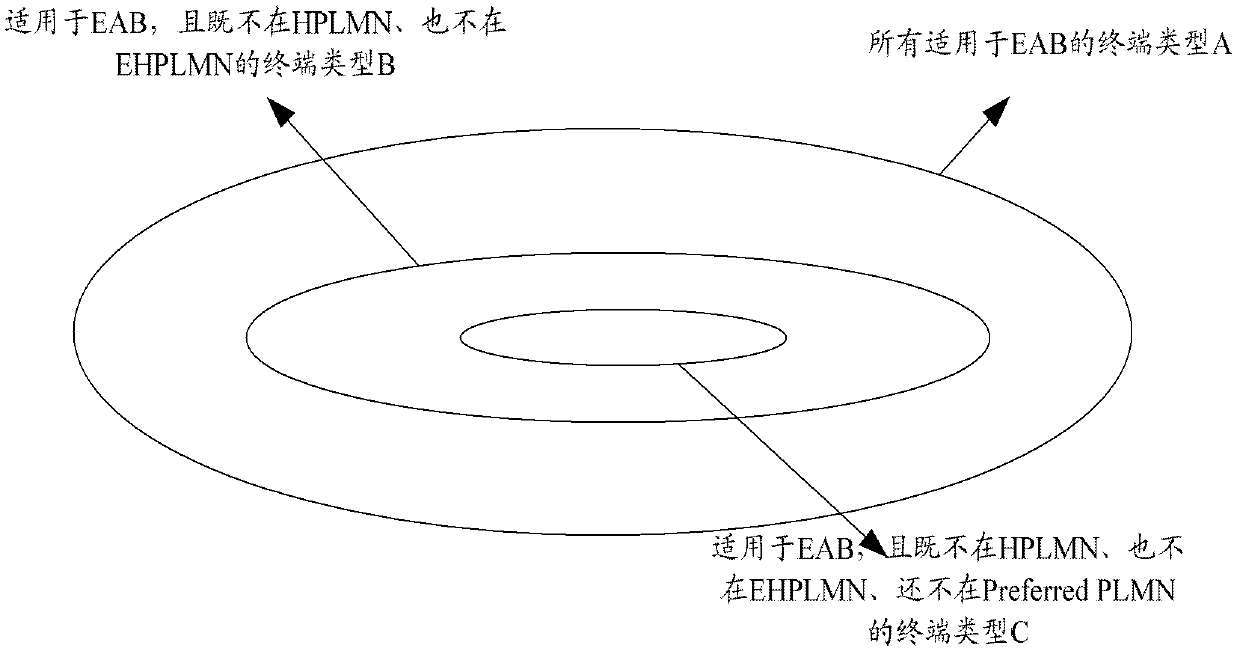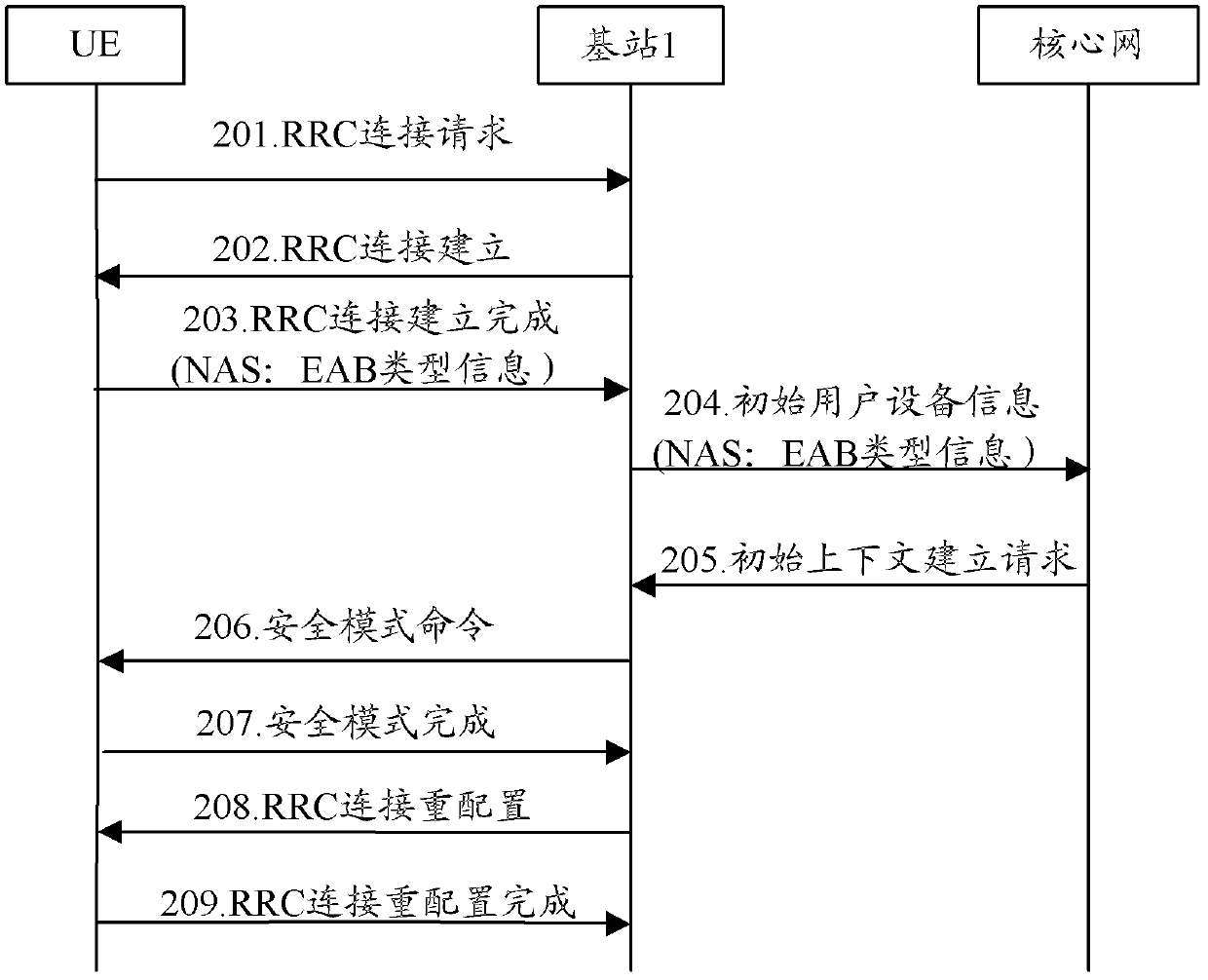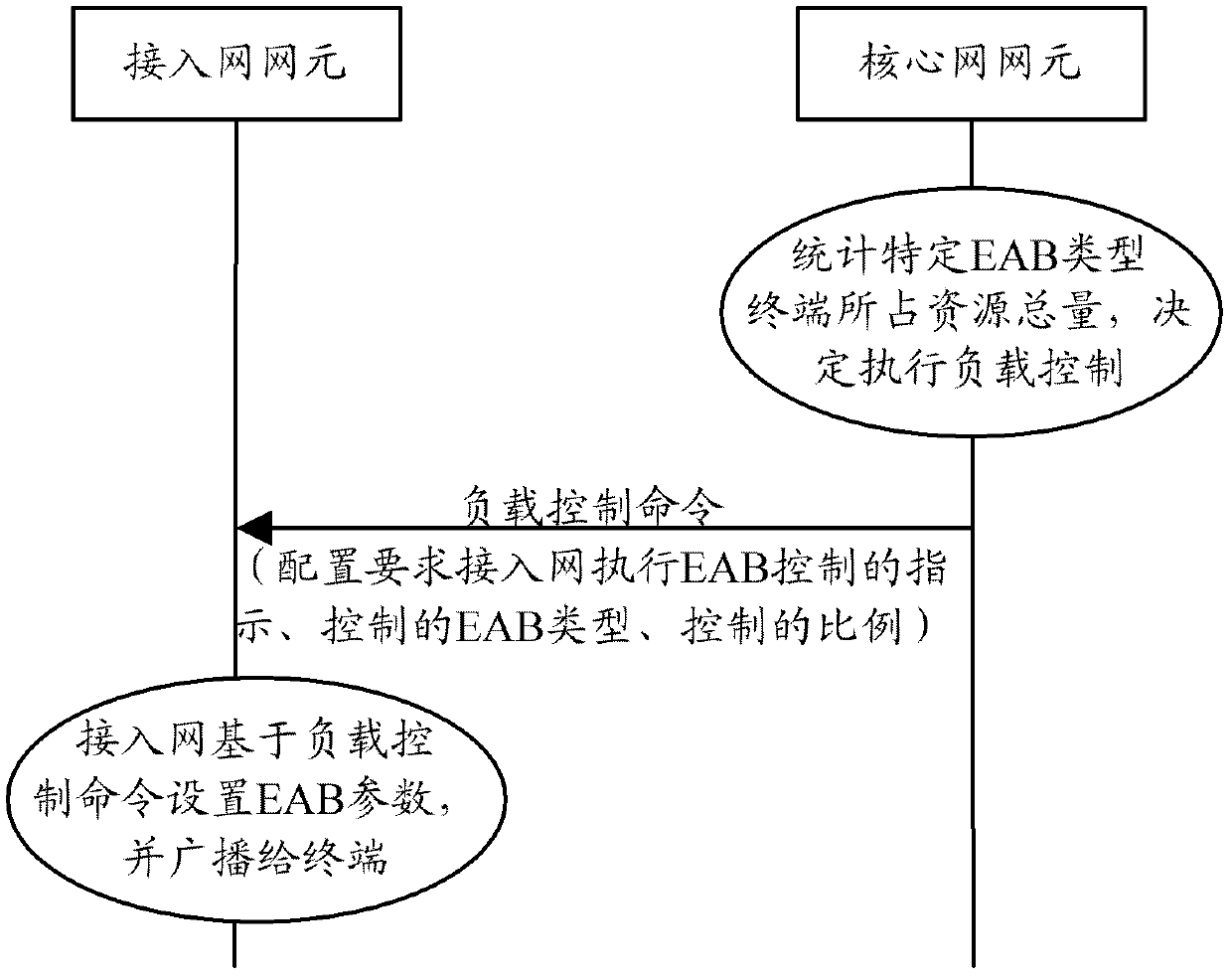Method, system and network side network element for network control load
A network side and network element technology, applied in network traffic/resource management, electrical components, wireless communication, etc., can solve the problem of not being able to know the amount of resources, and achieve the effect of improving user experience and ensuring business service quality
- Summary
- Abstract
- Description
- Claims
- Application Information
AI Technical Summary
Problems solved by technology
Method used
Image
Examples
Embodiment 1
[0066] This embodiment describes in the LTE / UMTS system, the UE reports the EAB type, the CN counts the resources used by the specific EAB type terminal UE, triggers load control, and commands the access network to configure extended access control parameters.
[0067] In this embodiment, UE1 and UE2 reside in cell 1 under the jurisdiction of base station 1 and are in an idle state. Both UE1 and UE2 are configured as UEs applicable to EAB. In addition, the USIM card of UE1 indicates that the access class of the UE is 2, that is, the Access Class is 2. The USIM cards of UE1 and UE2 also store HPLMN identifiers, which may also include EHPLMN identifiers and preferred public land mobile network identifiers (preferred PLMN). According to the type of the cell on which the UE resides and the cell identities corresponding to each type stored by the UE itself, UE1 belongs to Category B, and UE2 belongs to Category A.
[0068] When UE1 needs to initiate a service, it needs to judge w...
Embodiment 2
[0100] This embodiment describes that in the UMTS / LTE system, the CN judges the EAB type of the access UE based on the core network information, the CN counts the resources used by the specific EAB type terminal UE, triggers load control, and orders the access network to configure extended access control parameters Methods.
[0101] In this embodiment, the UE3 resides in the cell 2 under the jurisdiction of the base station 2 and is in an idle state, and the base station 2 is under the jurisdiction of a radio network controller (RNC, Radio Network Controller). UE3 is configured as a UE applicable to EAB. In addition, the USIM card of UE3 indicates that the access type of the UE is 4, that is, the Access Class is 4. The USIM card of UE3 also stores the HPLMN identifier, which may also include the EHPLMN identifier and the preferred public land mobile network identifier (preferred PLMN). In this embodiment, UE3 is a UE of Category A.
[0102] UE3 needs to initiate a service, ...
Embodiment 3
[0126] This embodiment describes a method for RAN to count resources used by a specific EAB type terminal UE, trigger load control, and configure extended access control parameters in an LTE / UMTS system.
[0127] In this embodiment, UE4 and UE5 reside in the cell 3 governed by the base station 1 and are in an idle state. Both UE4 and UE5 are configured as UEs applicable to EAB. In addition, the USIM card of UE4 indicates that the access type of the UE is 2, that is, the Access Class is 2. The USIM cards of UE4 and UE5 also store HPLMN identifiers, which may also include EHPLMN identifiers and preferred public land mobile network identifiers (preferred PLMN). According to the type of the cell on which the UE resides and the cell identities corresponding to each type stored by the UE itself, UE4 belongs to Category B, and UE5 belongs to Category A.
[0128] When UE1 needs to initiate a service, it needs to judge whether to allow access to the network to initiate a service requ...
PUM
 Login to View More
Login to View More Abstract
Description
Claims
Application Information
 Login to View More
Login to View More - R&D
- Intellectual Property
- Life Sciences
- Materials
- Tech Scout
- Unparalleled Data Quality
- Higher Quality Content
- 60% Fewer Hallucinations
Browse by: Latest US Patents, China's latest patents, Technical Efficacy Thesaurus, Application Domain, Technology Topic, Popular Technical Reports.
© 2025 PatSnap. All rights reserved.Legal|Privacy policy|Modern Slavery Act Transparency Statement|Sitemap|About US| Contact US: help@patsnap.com



